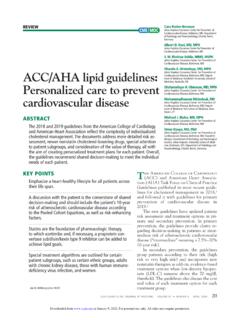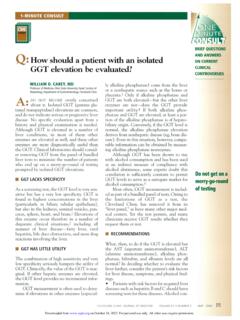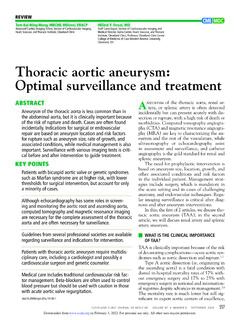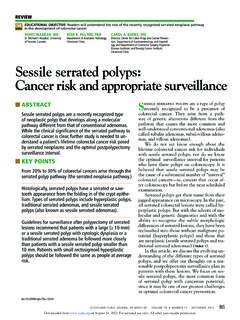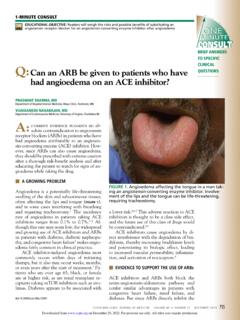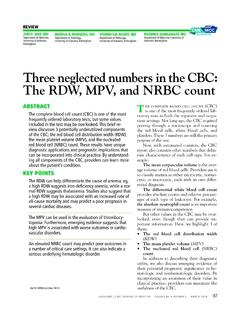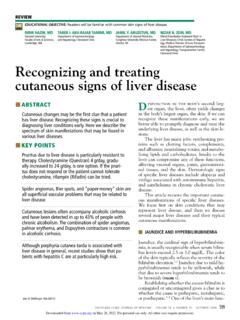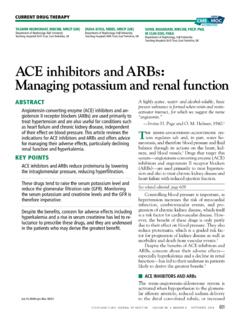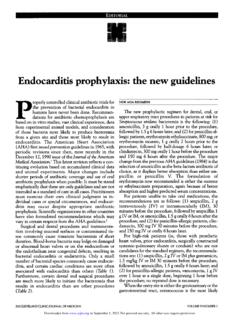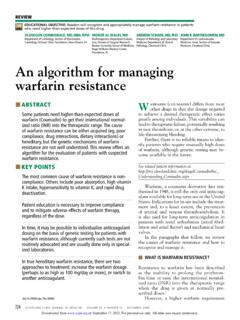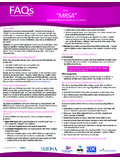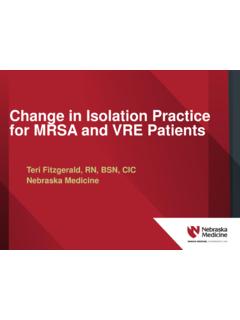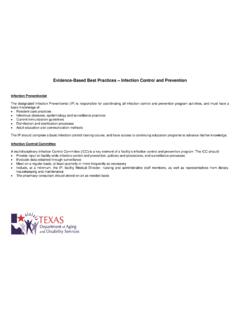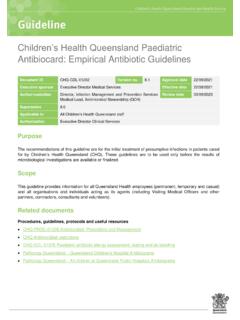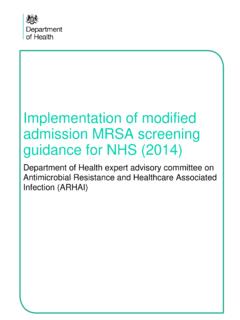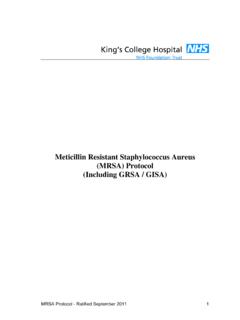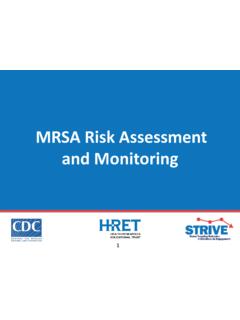Transcription of Sepsis and septic shock: Guideline-based management
1 Sepsis and septic shock: Guideline-based managementCLEVELAND CLINIC JOURNAL OF MEDICINE VOLUME 87 NUMBER 1 JANUARY 202053 Sepsis and particularly septic shock should be recognized as medical emergen-cies in which time matters, as in stroke and acute myocardial infarction. Early recognition and rapid institution of resuscitative measures are critical. But recognizing Sepsis can be a challenge, and best management practices continue to evolve. This article reviews guidance on the di-agnosis and management of Sepsis and septic shock, with attention to maximizing adher-ence to best practice statements, and contro-versies in defi nitions, diagnostic criteria, and management .
2 COMMON AND LIFE-THREATENINGS epsis affects 750,000 patients each year in the United States and is the leading cause of death in critically ill patients, killing more than 210,000 people every About 15% of patients with Sepsis go into septic shock, which accounts for about 10% of admissions to intensive care units (ICUs) and has a death rate of more than 50%. The incidence of Sepsis doubled in the United States between 2000 and 2008,2 pos-sibly owing to more chronic diseases in our aging population, along with the rise of anti-biotic resistance and the increased use of in-vasive procedures, immunosuppressive drugs, and chemotherapy.
3 The cost associated with Sepsis -related care in the United States is more than $ billion DEFINITIONS HAVE EVOLVEDIn 1991, Sepsis was fi rst defi ned as a systemic infl ammatory response syndrome (SIRS) due is a life-threatening organ dysfunction that results from the body s response to infection. It requires prompt recognition, appropriate antibiotics, careful hemodynamic support, and control of the source of infection. With the trend in management moving away from protocolized care in favor of appropriate usual care, an understanding of Sepsis physiology and best practice guidelines is critical.
4 KEY POINTST ools such as the Systemic Infl ammatory Response Syndrome criteria and the quick version of the Sequential Organ Failure Assessment can help with early diagnosis and triage. The initial antibiotic should be broad-spectrum, based on local sensitivity patterns, with daily assessment of appro-priate antibiotic de-escalation and cessation. Resuscitation with initial fl uid boluses should be followed by weighing benefi ts and risks of additional fl uid admin-istration based on dynamically assessed volume status, and then aggressive fl uid removal during recovery.
5 During resuscitation, a goal mean arterial pressure of 65 mm Hg is preferred, using norepinephrine (with vasopres-sin if needed) to achieve it. Glucocorticoids are not recommended if fl uid resuscita-tion and vasopressors are suffi cient to restore hemo-dynamic stability. Siddharth Dugar, MDDepartment of Critical Care, Respiratory Institute, Cleveland Clinic; Clinical Assistant Professor, Cleveland Clinic Lerner College of Medicine of Case Western Reserve University, Cleveland, OH Chirag Choudhary, MD, MBAD epartment of Critical Care, Respiratory Institute, Cleveland Clinic.
6 Clinical Assistant Professor, Cleveland Clinic Lerner College of Medicine of Case Western Reserve University, Cleveland, OH Abhijit Duggal, MD, MPH, MSc, FACPD epartment of Critical Care, Respiratory Institute, Cleveland Clinic; Assistant Professor, Cleveland Clinic Lerner College of Medicine of Case Western Reserve University, Cleveland, OH on February 5, 2022. For personal use only. All other uses require from 54 CLEVELAND CLINIC JOURNAL OF MEDICINE VOLUME 87 NUMBER 1 JANUARY 2020 Sepsis AND septic SHOCKto a suspected or confi rmed infection with 2 or more of the following criteria4.
7 Temperature below 36 C or above 38 C Heart rate greater than 90/minute Respiratory rate above 20/minute, or arte-rial partial pressure of carbon dioxide less than 32 mm Hg White blood cell count less than 4 109/L or greater than 12 109/L, or more than 10% bands. Severe Sepsis was defi ned as the progression of Sepsis to organ dysfunction, tissue hypoper-fusion, or hypotension. septic shock was described as hypotension and organ dysfunction that persisted despite volume resuscitation, necessitating vasoactive medication, and with 2 or more of the SIRS criteria listed above.
8 In 2001, defi nitions were updated with clinical and laboratory In 2004, the Surviving Sepsis Campaign guidelines adopted those defi nitions, which led to the development of a protocol-driven model for Sepsis care used The US Centers for Medicare and Medicaid Services (CMS) followed suit, defi ning Sepsis as the presence of at least 2 SIRS criteria plus infec-tion; severe Sepsis as Sepsis with organ dysfunc-tion (including serum lactate > 2 mmol/L); and septic shock as fl uid-resistant hypotension requiring vasopressors, or a lactate level of at least 4 In 2016, the Sepsis -3 committee8 issued the following new defi nitions.
9 Sepsis A life-threatening condition caused by a dysregulated host response to infection, resulting in organ dysfunction septic shock Circulatory, cellular, and metabolic abnormalities in septic patients, presenting as fl uid-refractory hypotension requiring vasopressor therapy with asso-ciated tissue hypoperfusion (lactate > 2 mmol/L). The classifi cation of severe Sepsis was defi nitions create confusionBoth the CMS and international consen-sus defi nitions are currently used in clinical practice, with distinct terminology and dif-ferent identifi cation criteria, including blood pressure and lactate cutoff points.
10 The CMS defi nition continues to recommend SIRS for Sepsis identifi cation, while Sepsis -3 uses se-quential organ failure assessment (SOFA) or the quick version (qSOFA) to defi ne Sepsis (described below). This has led to confusion among clinicians and has been a contentious factor in the development of care protocols. TOOLS FOR IDENTIFYING HIGH RISK: SOFA AND qSOFASOFA is cumbersomeSOFA is an objective scoring system to de-termine major organ dysfunction, based on oxygen levels (partial pressure of oxygen and fraction of inspired oxygen), platelet count, Glasgow Coma Scale score, bilirubin level, creatinine level (or urine output), and mean arterial pressure (or whether vasoactive agents are required).
